JPEG Continues Support for Image Repository Interoperability and Archival Applications
The Joint Photographic Experts Group (JPEG) is a Working Group of ISO/IEC, the International Organisation for Standardization / International Electrotechnical Commission, (ISO/IEC JTC 1/SC 29/WG 1) and of the International Telecommunication Union (ITU-T SG16), responsible for the popular JPEG, JPEG 2000, JPEG XR and more recently, the JPSearch and JPEG XT families of imaging standards. The WG1 group meets nominally three times a year, in Europe, North America and Asia. The latest meeting was held on July 08 – 12, 2013 in London, United Kingdom.
Image metadata descriptions are evolving from natural-language definitions to shared machine- processable representations. In the open world of Linked Data, anyone can define his own ontologies, leading to a proliferation of vocabularies. As a consequence, there are several ways of describing and referring to images. This ambiguity results in a proliferation of vocabularies for image descriptions, complicating the cross-community data integration of information related to digital images. Therefore, JPEG has recently initiated several activities to streamline the integration of images in the cloud of Linked Data. One effort is the standardization of an ontology for describing digital images (ISO/IEC 24800-2). JPEG aims at providing a technology that enables the uniform description of photos and videos with technical, administrative and semantic metadata compliant with the RDF specification and the principles of Linked Data. In addition, a specification to integrate RDF data into JPEG images is defined.
JPSearch Part 3 defining the JPSearch Query Format (JPQF) to query image repositories, is an XML based query language that defines the syntax of queries, exchanged between client applications and repositories. To encourage interoperability, JPQF is defined as a subset of the MPEG7 Query Format (MPQF). Many contemporary web services provide an Application Programming Interface (API) as a query interface. These APIs do not only specify a query syntax but also define the interaction protocols. Typically, common queries can be expressed with a simple URI-based syntax. However, most of these APIs are developed in an ad-hoc way, complicating distributed image search. Therefore, the JPEG committee started a new effort to define a JPSearch API complementary to the JPSearch Query Format.
WG1 would like to put the attention on its continued efforts to further improve the functionality offered by its standards. For JPEG specifically, WG1 is probing for security and privacy technologies to enforce the secure exchange of JPEG imagery. Moreover, WG1 is investigating how JPEG standards can deliver an improved support for augmented reality applications. In this context, WG1 held a successful joint meeting with the ISO/IEC Steering Committee on Image Technology (SCIT) to explore work on augmented reality in various communities such as image and video processing and computer graphics. Finally, WG 1 has released a call for proposal on evaluation procedure for visually lossless coding.
During the London meeting the JPEG experts had an opportunity to see examples of the successful adoption of JPEG2000 in applications in archiving in library and public records applications and the different approaches to supporting remote user access to the information across the Internet (see The British Library and The National Archives).
The JPEG web site (http://www.jpeg.org) has sponsorship opportunities for all companies involved in developments around JPEG. The marketing departments of interested companies should contact the webmaster, Richard Clark (webmaster@jpeg.org) for this high-traffic site.
The next (63rd) WG 1 Meeting and its ad hoc group meetings will be held on October 28-31, 2013, in Geneva, Switzerland.
